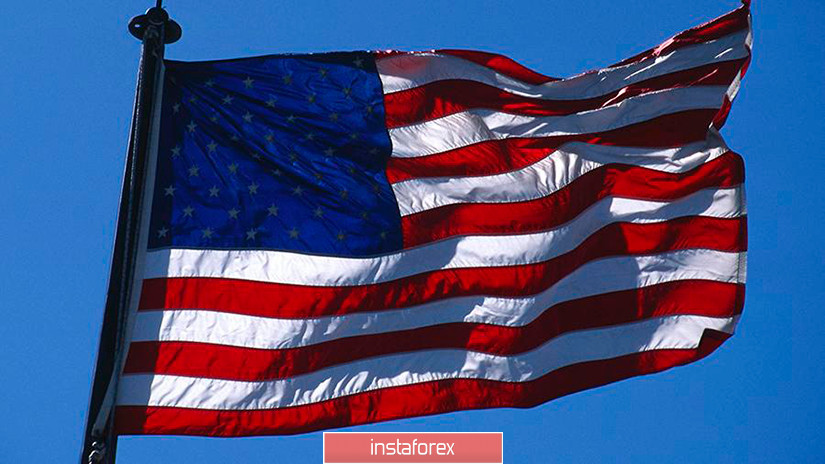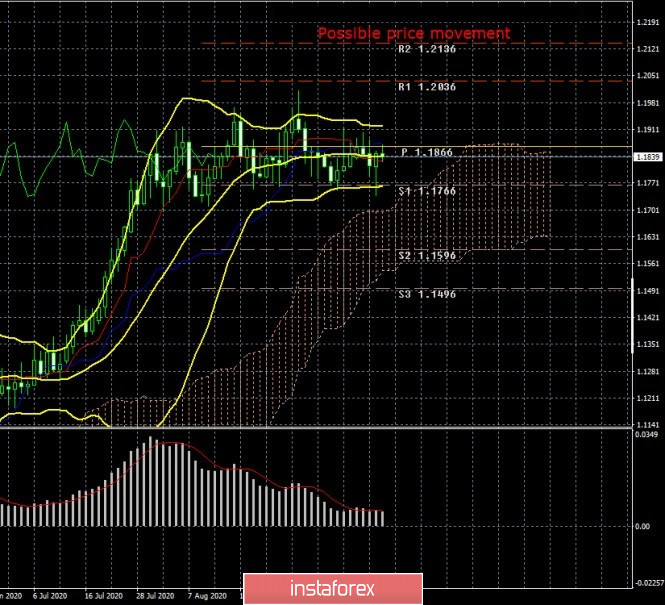
The past trading week has clearly shown that the market does not have enough ghostly hints from Jerome Powell that the economy is recovering at a higher pace and in general everything can be fine. Recall that since mid-March, the European currency has been rising in price almost non-stop in a pair with the US dollar. If the first weeks of this growth were clearly associated with the recovery after the severe fall of the euro currency (markets in the first weeks of the pandemic rushed to buy the US dollar, believing that it is the most stable currency and the best choice during the next crisis), then in the following weeks and even months, traders have more consciously invested in the euro currency. The reasons for this behavior of market participants all this time lay on the surface. Such a number of crises that the United States faced in 2020 could not but provoke a sell-off of the US currency. As a result, the US dollar lost 14 cents and froze in place. For almost two months, trading has been held in a narrow range, with a width of only 200 points. Buyers can not find new reasons for new purchases of the euro currency after it increased by 13-14 cents. Further, sellers simply can't find reasons for their activities, which involve selling euros and buying dollars. Indeed, what are the reasons to buy the dollar now? There are no economic reasons. Even though the US economy has started to recover and the forecasts for GDP, unemployment, and inflation have been revised for the better by the Fed, we should not forget that the US economy suffered a record loss of 32% in the second quarter. We have talked about this many times, however, it is really an extremely important factor. However, the European economy lost just 12% in the second quarter. Now there is a reasonable question: is it easier to recover from 32% or 12%? Thus, even with the increased pace of recovery, the economic situation in America may remain worse than in the European Union. Given the fact that traders persistently do not want to buy the dollar, even taking into account the need for a corrective movement, it seems that they agree with our conclusions and arguments.
However, not only economic reasons are important for the currency market now. The epidemiological picture of the European Union and the United States also eloquently indicates which of the currencies should become more expensive. In the US, in fact, there was no first or second "wave" at all. There was one wave that started back in March of this year. Almost immediately, the incidence rates rose to 30-40 thousand per day, then followed a small rollback to about 20 thousand new cases per day, then an increase to 60-80 thousand cases and now a new rollback to 40-50 thousand. Thus, if you look at this graph, you can actually see two waves, however, we believe that in the case of an epidemic, a new outbreak can be considered a wave. For example, in the European Union, in the most affected Italy, the number of cases of "coronavirus" increased in March and April and at highs was 6-7 thousand per day. However, from April to July, the indicator decreased and eventually came to the figures of 200-300 new cases per day. In other words, the incidence rate has dropped to almost zero. The wave ended. Only in recent weeks, the indicator has slightly increased and now it is 1-1.5 thousand cases per day. However, this is not a flash, it is only a small increase. In Spain, there is really a new outbreak, as 10-25 thousand new cases are recorded daily. It's the same in France. Thus, among all EU countries, only France and Spain are again at risk. Therefore, we believe that the epidemiological situation also remains more favorable in the European Union.
As for the vaccine, we would not pay attention at all to all these loud statements by Donald Trump that vaccination will begin in October and other messages of a similar nature. In this issue, as in all other issues related to the "coronavirus", you need to trust doctors and epidemiologists, and not Trump or other politicians who simply pursue their own personal goals. And even if these goals are expressed in the interests of the state, this does not change the picture of the state of affairs in this matter. Trump currently needs to be re-elected for a second term, so he will promise a vaccine before the election, vaccinate the entire population, start using a vaccine that has not passed all the necessary clinical trials, and in case of problems, blame all the doctors and pharmaceutical companies. Doctors and virologists have said almost from the very beginning that creating a new vaccine is a very long process that can take from a year to two years. Actually, in practice, this is likely to happen. The vaccine, which will be available to the public, should be expected by the middle of next year.
And the third factor, which is also very important, is political. Elections in the United States is a special process. An election involving Donald Trump is an even more special process. The US dollar is probably under pressure due to the fact that investors and traders do not understand who will be the next US president and what to expect from him. Usually, all candidates make campaign promises, but in general, the course of the country remains unchanged. It is slightly changed, adjusted by the new president. In the case of Trump, this rule does not work. Trump has started a trade war with China, intends to continue it if he wins the election, and also intends to start a war with American companies that have moved their production to countries with cheap labor. Trump is not interested in the motivation of these companies. It is obvious that every company tries to reduce the cost of its production, which is impossible in America. The American president believes that companies should return their factories to the United States, otherwise he will raise taxes for these companies and cancel all government orders for their products. In general, a war. I don't even want to think about how this confrontation might end. We have already seen how the confrontation between China and the United States ended. Two years of a trade war, a "weak" agreement, most of the duties and sanctions remained in force, a "coronavirus epidemic", the true causes of which are hidden in the fog.
Based on all the above, now the US dollar can count on maximum technical corrections, and the positions of the European currency look much more attractive.

Trading recommendations for the EUR/USD pair:
The technical picture of the EUR/USD pair on the 24-hour timeframe shows that the price continues to trade in the side channel of $ 1.17 - $ 1.19, occasionally making attempts to exit it. A slight upward bias is present, however, this is not a trend. The Bollinger Bands clearly show that the flat is currently continuing. Thus, you can trade between the upper and lower bands or wait for quotes to exit this channel.





















